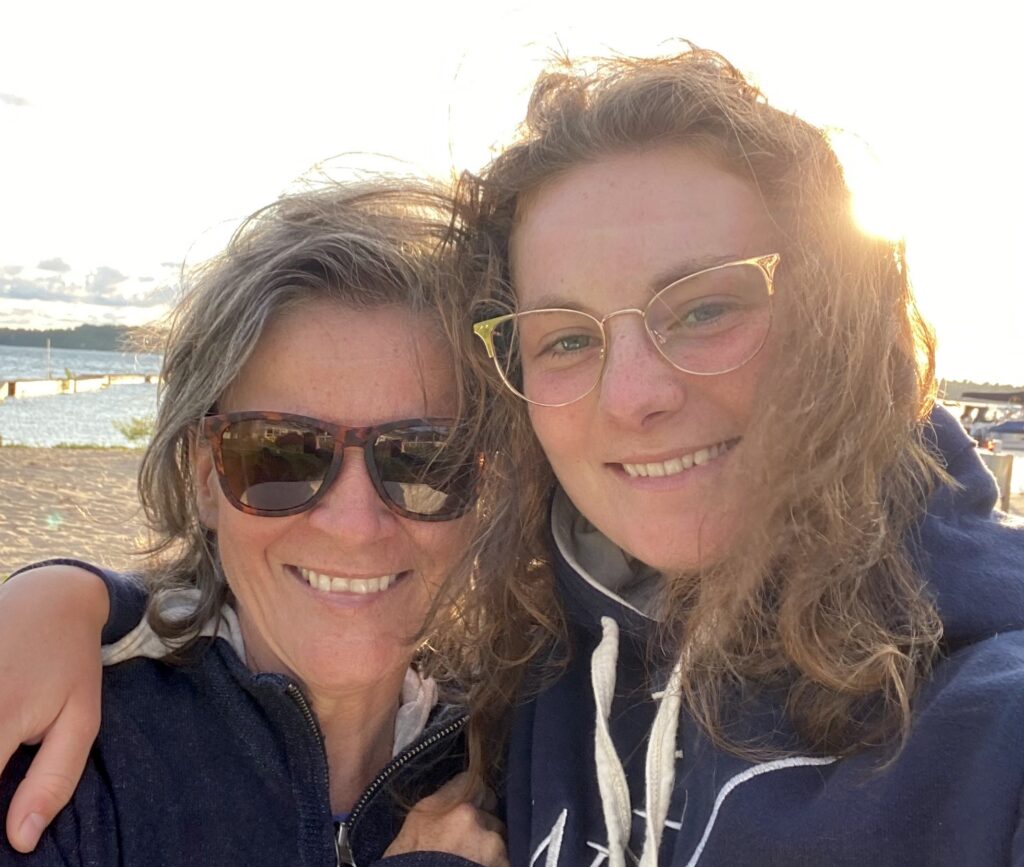A motion-activated nightlight in the hall. A bench in the shower. Non-slip tape on rug corners. Practitioners like Susan Stark, professor of occupational therapy at WashU Medicine, have long turned toward these simple, proven strategies to reduce a person's risk of falling. Through the Home Hazard Removal Program (HARP), a one-on-one intervention system Stark designed, she strives to bring these kinds of solutions to as many older adults as possible.
HARP has already reached nearly 1,000 St. Louis-area residences. A randomized trial with more than 310 households, completed in 2021, proved the high effectiveness of the intervention. In partnership with the St. Louis Area Agency on Aging (SLAAA), hundreds more homes have since implemented the program. And now, with a surprise assist from Stark's daughter Sophie Fendler, a junior majoring in physics in Arts & Sciences, the team is working toward expanding the program nationwide.
In the program, participants receive 1-3 visits from a HARP-trained occupational therapist (OT) over the course of a month. The OT identifies physical issues in the home and discusses the client's typical activities. Perhaps the person gets up once or more at night to go to the bathroom. Navigating a dark area while disoriented from sleep is one common behavior that can lead to falls, Stark says.
"We know that every individual is different, and every home is different," she says. "The secret of this is looking at the individual. What do they do in their home? What environmental barriers do they have?"
Several factors contribute to a person's fall risk. Some of Stark's clients have chronic conditions like arthritis, mobility impairments or physical limitations from a previous stroke. Older adults may also have osteoporosis or slower reflex times, making falls more likely to result in serious injury. For many of these conditions, medical treatments will never fully "fix" the problem, Stark says. By instead focusing on a person's environment, OTs can still greatly increase long-term quality of life.
"If we can fix people's homes to make them more independent, safer and longer, we can stave off some of those really expensive downstream costs of assisted living or institutional care that a lot that bankrupt a lot of families."
Susan Stark
On each HARP visit, the OT brings a kit of low-cost, commonly used safety items like double-sided carpet tape and automatic nightlights. On average, the total cost for adjustments is less than $200. In the randomized trial, participants who received the intervention spent less money on health care than the control group, experiencing a 111% return on investment. Those savings have the potential to increase dramatically over time.
"If we can fix people's homes to make them more independent, safer and longer, we can stave off some of those really expensive downstream costs of assisted living or institutional care that a lot that bankrupt a lot of families," Stark says. "The number of falls was significantly less for our treatment group, which is a huge cost savings - not to mention pain and suffering and fear."
With the clear benefits of HARP established - clients in the randomized trial intervention group experienced a 38% reduction in falls - Stark turned her attention to growing the program and reaching more individuals in need. That's where her daughter stepped in.
"She was tired of me complaining!" Stark says, laughing. "I kept talking about how it's so sad that we invented it, and now it's living in an academic journal. And she said, 'Mom, there are ways to train occupational therapists do this. You just have to get a website and build it and make it happen.'"

"I truly believe my mom has created something with the potential for significant social impact, and I'm now committed to helping her get it out there!" Fendler says.
Together, Stark and Fendler attended a National Institute on Aging boot camp to help think through how to best build a web-based training program for HARP. Fendler also turned to resources on campus, beginning with the Skandalaris Center for Interdisciplinary Innovation and Entrepreneurship.
"With help from the Skandalaris Center, I've learned so much about social entrepreneurship, and I've really enjoyed the process of building a business plan and pitching for funding," Fendler says. This semester, she's also enrolled in "Introduction to Social Entrepreneurship" at Olin Business School, a course that has helped her work through the challenges of starting a new venture.
With these resources as a guide, the mother-daughter duo is in the process of launching AgeSafe Assist, an online training portal for occupational therapists. They've enlisted OTs to pilot the program and are applying for a Small Business Innovation Research (SBIR) federal grant.
"My goal is that we get this information into the hands of therapists as quickly as possible," Stark says. "If we're successful in achieving SBIR funding, then we plan to commercialize the content."
In the meantime, Stark's lab continues to implement HARP closer to home, advocate for fall prevention and continue related interventions, like exercise programs for older adults. September 22 marked national Fall Prevention Awareness Day, but for Stark and members of her lab, the sentiment applies all year.
A few weeks ago, Stark's team brought their popular "Fall Prevention Bingo" to a local elderly care facility. They developed the game at the suggestion of their Community Advisory Board, which brings a group of older adults to WashU four times a year to discuss how to best reach those at risk. Whether it's installing a grab bar, building a website, designing a new research study or playing bingo, Stark and her team are determined to reduce falls.
"I'm interested in how we can create environments that support people where they are," Stark says. "I've worked in lots of places as an OT, and no one has ever said, 'Hey Susy, help me get to that nursing home a little bit faster.'"






